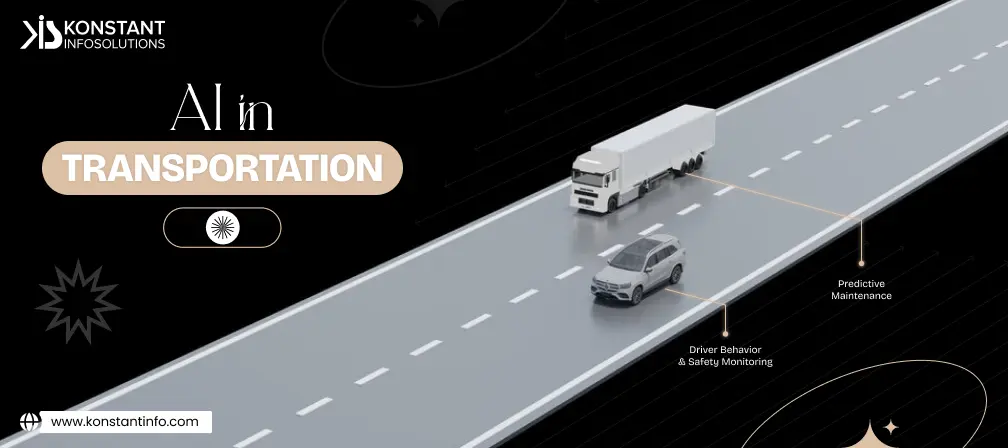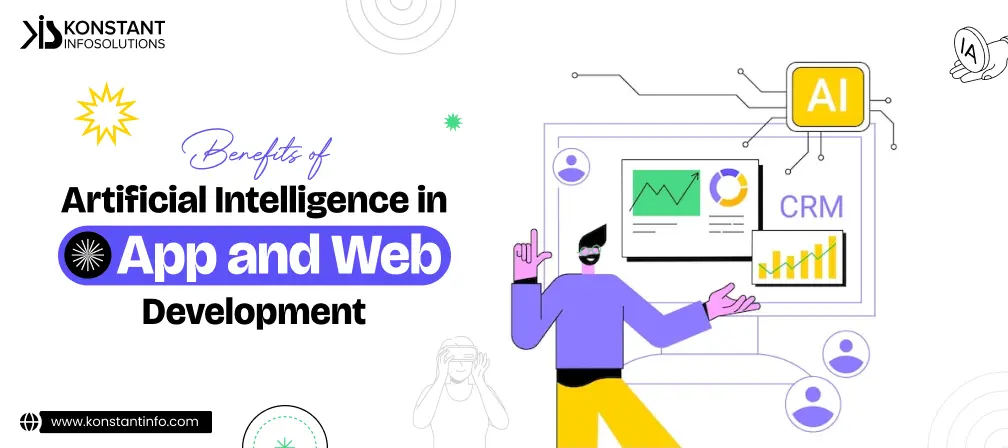Cloud computing is on the path to becoming the most useful product of your business. Formerly, enterprises used to reserve and process all their applications, core data processing, and systems through their in-house servers. This led them to consume a large and costly space. With the rise of advanced technology like cloud migration services, your businesses can now use any of several providers (CSPs) available to rent remote servers and run your tasks and applications. This is achieved by using only the needed amount of storage and computing power. This fulfils your business requirement and functions with balanced efficiency.
With cloud computing functionality at the heart of this rapidly growing digital flexibility, the dynamic ability to adapt and quickly create your own in-house solutions is the direct path to your success. From small businesses to large international enterprises, cloud services improve business operations and assist in the competitive convergence of various industries.
It also allows you to have faster and cheaper computing. This reduced the need to buy and maintain servers. These advantages have helped cloud computing to achieve $3 trillion in global market capitalization by this decade. Cloud computing trends are helping the digital economy surge greatly by providing a solid and augmentable foundation. It also equips them with instant accessibility to diverse internet resources. Corporations are increasingly harnessing cloud server capabilities to optimize and organise operations, drastically lower costs, and increase flexibility to get a competitive edge. Depending on industry needs, there are various cloud computing services like IaaS, PaaS, and SaaS.
New startups are installing cloud computing services strategically, along with ai in cloud computing, to automate most of your business operations. This helps you achieve increased stability, high responsiveness, and progressive growth. Your business becomes fast and easily optimized. This strategic approach allows the effective management of dynamic challenges in cloud-based platforms, ranging from supply chain optimization and collaboration to enhanced your responses to fluctuations.
It is a remarkable solution for storing, processing, and maintaining data on offline and online servers of a cloud computing company. Which rents it for hosting and running your applications and systems. This means it is a virtually interconnected network of servers that help host software, data, and other relevant internet services. Startups and large enterprises increasingly use these servers to keep data and services accessible at all times.
There are several key advantages and benefits of cloud computing, including cost-effectiveness, accessibility, and expandability of your business. You now only need to pay for accessing computing-specific resources, which can be switched on or off as required.
The growing cloud computing integration within organizations has pushed numerous industries to digitize their services and functionalities globally. Many digital solutions exist today for your convenience. And with the cloud computing services and functionalities, various ways exist to collect and optimize your data and applications online. Let’s examine some types of cloud service models that allow you with effortless and fast business operations.
Infrastructure as a service in cloud computing is easier to comprehend that businesses are seeking complete access to data storage, web elements, and virtual device services, with full control over management. In that case, they must go for IaaS. It offers enriched repositories, corresponding servers, and combined networking proficiencies. These are the critical configurations and benefits of cloud computing. IaaS allows businesses to access digital computing resources and components, initiating growth in their IT infrastructure.
Examples: Microsoft Azure and Amazon Web Services.
If developers seek an effective platform to build, engage with, and run their applications. In that case, platform as a service in cloud computing is the most promising and suitable option for providing this medium. It offers several cloud application development services, tools, and an interactive operating system. It also offers a bridging interface that connects all the storage sites and applications on a platform. PaaS also equips developers with a cloud infrastructure to host applications, without requiring them to focus on the baseline architecture.
Examples: Google Cloud Platform (GCP) and Heroku.
Unlike IaaS and PaaS, software as a service in cloud computing provides access to software applications to businesses for managing core operations and marketing activities. It doesn’t require firms to handle or install the applications; they have instant access to the software via a web page. SaaS is known to provide completely operational and active cloud services as an application on the Internet. This ultimately aids in data backup and recovery.
Examples: Salesforce and Microsoft 365.
Cloud computing services has become integral to businesses. Affecting our day-to-day life which is centered around digital products whether it is watching movies online and virtually buying groceries or operating the vehicle and finding a parking spot. It also instantly connects us with friends and family through mobile apps and web browsing. Startups and enterprises, if not equally, have greater advantages to using it in their business, which can significantly increase profits, reduce costs, and improve productivity. It can also provide advanced protection from internal and external threats.
Let’s explore some prominent advantages and benefits of cloud computing:
Cloud computing has consistently allowed various industries to achieve high growth in the digital space. It does so by offering faster data-processing speeds and the ability to adjust operations as per business requirements. In the past, enterprises used to install either conventional IT configurations or traditional in-house systems. These old systems are not only expensive to size increase but also largely uncompromising. However, adding cloud application development services has offered functional adaptability that expands and retracts, considering variations in business requirement. This usually helps companies stay flexible against ever-changing business needs.
Many small and large businesses, mainly startups, use cloud computing services for cost reduction. This is resulting in less and less number of companies, funding, and managing complex hardware and expensive data centers. When it comes to calculating the costs of cloud computing, it only requires you to pay for the services or functionalities you have used in your business operations. It helps you in reducing capital spending. This allows more time and money for research and development.
Cloud computing services are actively helping businesses create collaborative ventures. This drives productive, creative, and cross-functional teamwork. This happens using advanced tools and features offered to their employees and managers. This approach is fast and easy. It only requires teams to have a high-speed internet connection to work remotely from anywhere.
Many businesses face regular safety issues like data leaks, cyberattacks, and sudden system failures in the digital cloud servers. It results in increased cost and loss of user confidence. Several cloud platforms have already made significant investments to fund building advanced security standards and systems. They also provide frequent upgrades for accessibility management, end-to-end data encryption models. These safety protocols secure data and protect businesses from various cyber threats.
When businesses face unpredictable disruptions and continuous disasters, cloud computing platforms have been known to keep operational functionality going until alternative solution emerges. These platforms efficiently create backups and initiate recovery when operations are discontinued due to various disruptions. Cloud computing technologies can still run your business functions, even if the data canter or office infrastructure is damaged. This helps you with faster decision making.
Businesses frequently gain actionable analytics by collecting data to achieve productivity and creativity. This helps in gaining important insights to help with your tasks. Cloud computing also offers your businesses with high data processing power. Which allows them to use analytics to identify potential prospects for business. This helps your enterprises make informed, data-driven decisions to expand business operations.
Cloud computing technologies are helping startups and businesses become adaptive and relevant in to get a competitive edge. These platforms are known to build and operate new services and apps quickly than your adversaries, react promptly to business fluctuations, and achieve creativity.
Cloud computing technologies are helping businesses quickly transition from traditional data canters to digital cloud solutions. It helps in promoting sustainable data processing. Several initiatives are underway to create energy-efficient data canters, offer eco-friendly hosting services, and minimize the carbon footprint to achieve carbon neutrality.
The goal of a cloud is to create a unified, automated, and growable environment that uses all the benefits of a public cloud infrastructure. It also maintains control over mission-critical data.
Let’s explore the known types of Cloud deployment models:
A business can uses many data centers to offer private cloud services to its internal and external users. They receive private cloud accessibility to build and maintain its baseline cloud services. This model used by the organizations offers the ability and convenience of the cloud while preserving the management, control, and security usually associated with local data centers. These users might be billed for services through IT chargeback.
Examples: AWS.
Various business benefit from the public cloud model, a third-party cloud service provider (CSP) offers the cloud service through the internet. The resources are shared between multiple organizations. This helps with increasing cost efficiency to grow business.
Public cloud services are sold as per the requirement, typically by the minute or hour. However, It can be a long-term commitment for many services. They will only need to pay for the central processing unit cycles, memory, or bandwidth consumed.
Examples: Microsoft Azure.
It uses both public cloud services and an on-premises private cloud, with orchestration and automation facilitating effortless integration of the two. The companies can also run mission-critical workloads or sensitive applications on the private cloud. While using the public cloud to handle workload bursts or spikes in fluctuations. The goal is creating a hybrid cloud is to create a unified, automated, and extendable environment that benefits from the full capabilities of a public cloud infrastructure.
Organizations are increasingly using a multi-cloud model or various IaaS providers. This helps applications move through different cloud providers. They keep a multi-cloud strategy for various reasons, including minimizing the risk of a cloud service outage. It also benefits from more competitive pricing from a specific provider.
Many businesses are actively using cloud-based analysis tools for effective risk management, fraud detection, and investment analysis. This saves a lot of cost and time. Cloud computing in banking sector also allows firms with faster decisions making. By integrating cloud computing in financial services, it reduces the total cost of maintaining the physical in-house data-centers.
Below is the detailed explanation of various industries allowing Cloud Computing:
In the earlier days, financial institutions used to equip traditional in-house servers for better safety and protection. This way, it became slower for these institutions to adapt to digital cloud servers. This limitation is no longer a problem. With, cloud computing in financial services, users are realizing the true worth in modern times.
It offers reliable handling of customer relationships while providing services from anywhere in the world. Cloud computing also helps these businesses achieve faster transactions with larger volumes. Its multi-layered safety standard defends your business against data threats and breaches.
Many businesses are actively investing to digitise the fastest-growing industry, especially after the COVID pandemic. There is a rapid increase in cloud computing in healthcare Industry, favouring the digital upgrade of their existing infrastructure and services. This happens with the help of cloud computing integration. It offers cost-effective and secure doctor-patient interactions. It also provides efficiency in the protective and safe sharing of medical health records. Cloud computing offers a hyper-personalized healthcare experience with customized care using the data from the integration of different wearable technologies.
Following the path of healthcare industry, educational institutions also require the digital upgrade for educational strategy and approach. As Cloud computing in education Industry is surging ahead with adding online courses and syllabus, the need of it has become immense. Cloud-based platforms are offering advanced learning and evaluations techniques for remote students. It is cheap and easy to manage for both students and teachers.
Retail businesses are flourishing with the help of cloud computing tools and services. It allows them to run digital operations with less infrastructure and computing power. Cloud computing in retail Industry also leads to reduced costs and time. The need for physical storage server is removed. Many businesses are effectively joining the cloud integration model to improve operations. It is actively improving collection, processing, and optimization of various consumer data for inventory management.
In this industry where revenue and profit management steer the decision making. Which is signalling towards the migration in cloud computing with its existing infrastructure. It is improving various aspects including data analysis, cloud computing in IoT, and engineering solutions. It also offers simple and direct access to information. This can help you redirect your customers to other dealer’s locations if your inventory doesn’t have a specific vehicle.
Cloud computing can be used for claims, administration, underwriting, and product development, and today, broad use cases of digital solutions focus on cost reduction measures. Insurance companies serve in a highly competitive climate where retail and corporate consumers anticipate the most satisfactory value for money and beneficial online experience. Cloud computing has emerged as symbol for positive growth in the insurance industry.
It is very fast-growing industry. And the cloud integration is prompting real estate industry to digitise its day-to-day operations and services. It tracks various buying and selling data. It also makes real estate secure and transparent. This leads to increased trust and improved confidence. Various technologies like AI and machine Learning Models study user sentiments or moods using real-time data from cloud computing, including pictures, purchases history, and property ownership.
The ever-growing nature of industries in the face of new challenges and innovation is what pushes cloud computing in business. It is safe, cheap, and faster than traditional data storage and processing. It improves your strategy and approach to digitise your business functionalities and services effectively. Cloud-based platforms allow various businesses to actively use several functionalities and tools for hosting various products and services.
You can now use any of the several cloud service providers available to rent remote servers to run your tasks and applications. This not only allows you the amount of storage your data needs but also provides the needed computing power to run your operations.
It is a service of storing, processing, and maintaining data on offline and online servers of a cloud computing company. Which rents it for hosting and running your applications and systems.
The three main types of cloud service models are Infrastructure as a Service, Platform as a Service, and Software as a Service.
The cost consideration for cloud computing services depends on the goals of your project, selection of platforms (Android/IOS, or both), the region, and the required data management services.
Which main industries are taking advantage of Cloud computing services?
Following industries, the financial, healthcare, retail, and education industries are taking full advantage of cloud computing.



Vipin Jain is the Co-Founder and CEO at Konstant Infosolutions and is in charge of marketing, project management, administration and R&D at the company. With his marketing background, Vipin Jain has developed and honed the company’s vision, corporate structure & initiatives and its goals, and brought the company into the current era of success.
Or send us an email at: [email protected]